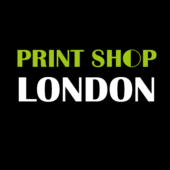What is DTF Printing?
Direct-to-Film (DTF) printing is a relatively new printing technology that has been gaining popularity in the garment decoration industry. It is known for its versatility, high-quality prints, and ease of use. DTF printing offers an innovative alternative to traditional methods such as screen printing and direct-to-garment (DTG) printing, combining some of the best features of these techniques while introducing new benefits.
How DTF Printing Works
- Design Creation: The process begins with creating or selecting a digital design. This design can be made using graphic design software such as Adobe Photoshop or Illustrator.
- Printing on Film: The design is printed onto a special PET film using a dedicated DTF printer. The printer uses a combination of CMYK inks for the main image and white ink for the underbase. The white ink layer ensures that the design is opaque and vibrant, even on dark fabrics.
- Applying Adhesive Powder: Once the design is printed on the film, a hot melt adhesive powder is applied to the wet ink. This powder adheres to the ink and provides the necessary bonding agent for transferring the design to the fabric.
- Curing: The film with the adhesive powder is then cured using a heat press or an oven. This step solidifies the adhesive and prepares the design for transfer.
- Transferring to Fabric: The cured film is placed on the fabric, and the design is transferred using a heat press. The combination of heat and pressure ensures that the adhesive melts and bonds the design to the fabric.
- Peeling the Film: After the heat press cycle, the film is peeled away, leaving the design permanently adhered to the fabric. The result is a vibrant, durable, and high-quality print.
Advantages of DTF Printing
- Versatility: DTF printing can be used on a wide variety of fabrics, including cotton, polyester, blends, and more. This makes it suitable for different types of garments and accessories.
- Durability: The prints created using DTF technology are highly durable and can withstand numerous washes without fading or cracking.
- Vibrant Colors: The use of CMYK inks and a white underbase ensures that the prints are bright and vivid, even on dark fabrics.
- Detail and Precision: DTF printing allows for intricate designs and fine details, making it ideal for custom graphics, logos, and artwork.
- Cost-Effective: For small to medium-sized print runs, DTF printing is often more cost-effective than traditional screen printing, as it does not require the creation of screens or extensive setup.
Applications of DTF Printing
DTF printing is suitable for a wide range of applications, including:
- Custom T-Shirts: Ideal for personalized t-shirts with unique designs, slogans, or logos.
- Sportswear: Perfect for creating custom sports jerseys, activewear, and team uniforms.
- Promotional Products: Suitable for printing on tote bags, caps, and other promotional items.
- Fashion Industry: Used for creating high-quality fashion apparel with intricate designs.
Conclusion
Direct-to-Film (DTF) printing is revolutionizing the garment decoration industry with its versatility, durability, and ability to produce vibrant, detailed prints. This technology offers a cost-effective solution for small to medium print runs, making it an excellent choice for businesses and individuals looking to create custom apparel and accessories. As DTF printing continues to evolve and improve, it is likely to become an even more integral part of the printing landscape, providing endless possibilities for creative expression and high-quality garment decoration.
